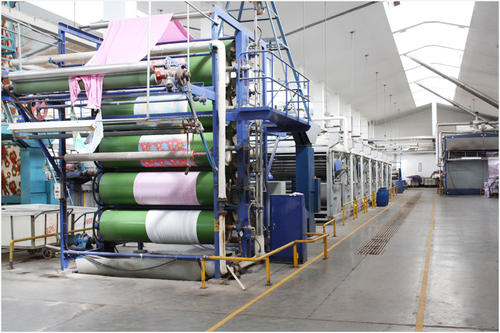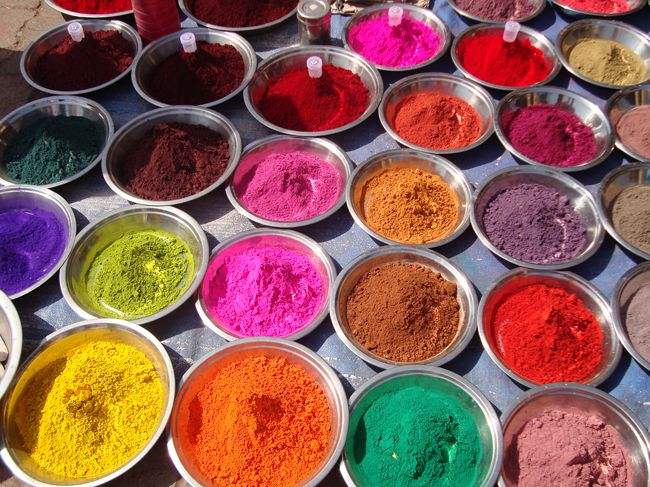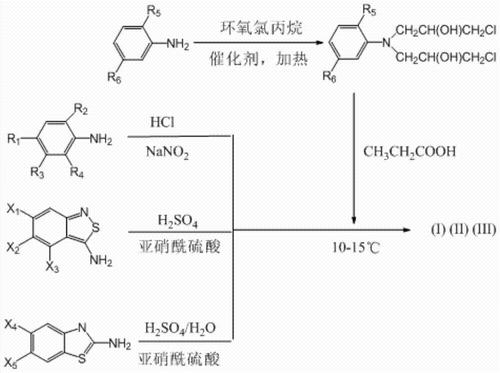How to avoid unevenness in the printing and dyeing process is one of the important indicators of the quality of the printing and dyeing process. Leveling agent is an auxiliary agent used to make the dye evenly dyed on the dyed object. One of the functions of the leveling agent is enough to make the dye adsorbed by the fiber relatively slowly, and secondly, when the dyeing is uneven, it makes the dye in the dark part move to the light part, and finally achieves leveling. Therefore, retardation and migration are the two most important functions of leveling agents.
In recent years, various new fibers have been widely used in the printing and dyeing industry. At the same time, with the gradual improvement of people's awareness of environmental protection, various types of leveling agents have been developed. The development of leveling agents for dyes is reviewed to better promote the research of leveling agents in my country.

1. Levelling agent for reactive dyes
The dyeing of cellulose fibers, at present, the proportion of reactive dyes is the largest. Reactive dyes are water-soluble dyes containing reactive groups, which can chemically combine with macromolecules such as cotton, wool, and silk, so the soaping and rubbing of dyed fabrics are fast. degree is very high. The commonly used leveling agents are generally nonionic surfactants. In addition to nonionic surfactants, anionic leveling agents and complexes of nonionic and anionic surfactants have also been frequently used in recent years.
The hydrophobic groups of commonly used 1F ionic surfactants can be higher alcohols, higher fatty acids, higher alkylamines, etc. The hydrophobic groups are above C12, and long-chain alkyl groups of C16 and C18 are ideal, which can be hydrophilic with polyoxyethylene. Water groups form ether-bonded, ester-bonded, amine-bonded, etc. linked forms.
The commonly used leveling agents Pingping 0, leveling agent 102 and leveling agent OP have a certain leveling effect on the dyed part of reactive dyes. Because the long molecular chain of this type of leveling agent contains polyoxyalkyl ether, it can form loose oxygen bonds with hydroxyl (-OH), amino (-NH) and other groups in the dye molecule. On the one hand, it combines with the dye to form a relaxed complex in the dye liquor, which hinders the adsorption and dyeing of the dye, thus playing a role in retarding the dyeing; It further promotes the uniform adsorption of dyes. For example, leveling agent WE for wool is aliphatic amine polyoxyethylene ether, which belongs to non-ionic/weak cationic type. It is mainly used as leveling agent for reactive dyeing of wool, which can improve the color supply. Affects the dyeing percentage, and also has excellent leveling effect in medium, neutral, weak acid and metal complex dyes.
2. Anionic surfactants

Anionic dispersing and leveling agents are dye affinity leveling agents. Anionic surfactants have the same ionic type as reactive dyes. The mechanism of preempting the dyeing mat is adopted to slow down the dyeing speed of dyes. Leveling agent EDER is an anionic leveling agent whose chemical composition is a complex of aromatic polyether sulfonates. It is a relatively new type of anionic leveling agent. Its advantages are as follows:
1) The leveling agent EDER has a certain chelating and dispersing adjustment function for heavy metal ions such as calcium and magnesium, and improves the quality of dyes; (2) In the |: dye adsorption stage, it has excellent retarding performance, and controls the dye to evenly dye and adsorb. ; (3) In the fixation stage, buffer the pH of the dye bath to ensure that the dye is fixed evenly and evenly to avoid uneven fixation; (4) No adverse effect on the dyeing fastness of the fabric.
Cotton dispersing and leveling agent 40Dx produced by Shanghai Daxlang Chemical Industry Co., Ltd. (Daxlang) is a new type of dispersing and leveling agent for cellulose fibers dyed with reactive dyes. In addition, it also has the effect of preventing the secondary agglomeration of metal ions such as calcium and magnesium and dyes to cause dye spots; it does not affect the final color, and has low foaming properties.
In addition, there are reactive dye leveling agent 640 and Daimian ER which have good leveling properties for reactive dyeing.
3. Compounds of nonionic and anionic surfactants
Nonionic surfactants obtain retarding effect by combining oxygen atoms on polyoxyethylene bonds with dye molecules by oxygen bonds. At present, most of the nylon leveling agents provided by auxiliary manufacturers are anionic/nonionic composite leveling agents, mainly including nylon leveling agent M-2200 (Hangzhou Meigao Huayi Chemical), leveling agent SWP Ningbo Xinghua Chemical), Nylon Leveling Agent N-1l (Shanghai Daxiang Chemical), Nylon Leveling Agent GND (Nantong Sint Chemical), Leveling Agent FK460 (Beijing China Textile Chemical), Leveling Agent TBW-951 (Guangdong Demei Chemical) , Nylon leveling agent rrs (Wuxi Changsheng Fine Chemicals).
2. Levelling agent for disperse dyes

1. Polyester fabric
When dyeing polyester with disperse dyes, the levelness is good, and the dyeing fastness is very high. At present, disperse dyes are mostly used for high temperature and high pressure dyeing in polyester dyeing processing, but it is difficult to color dark dyes and causes environmental pollution.
Product development has been the most active research topic in the textile industry for the past two decades. The superfine polyester fabric has a fast color absorption rate, and an appropriate leveling agent should be added to the dyeing bath to improve leveling. The leveling agent should have the following conditions: (1) good retarding effect; (2) good migration effect; (3) good dispersing effect, especially at higher temperatures (such as 80-120 ℃) Dispersion of dyes; (4) Does not affect dye uptake and shade; (5) Good stability against hard water and various heavy metal ions. For example, the leveling agent RDP=2000 is made of polyol and aromatic acid after reaction, and then compounded with emulsifier. It belongs to non-ionic and anionic compound leveling agent. RDP-2000 has strong permeability and dye migration, which can improve the high temperature dispersibility of disperse dyes to a certain extent. The advantages are: (1) easy application and good effect; (2) wide technological adaptability; (3) effectively inhibiting tar spot and color spot phenomenon; (4) no adverse effect on the color light and fastness of dyestuffs. The new polyester high temperature leveling agent WYR-1 is developed by using sodium dodecyl benzene sulfonate, sodium dodecyl polyoxyethylene ether sulfate, polyoxyethylene (7) glycerin cocoate and surfactant WYR. The performance test and application show that WYR-l has good dye dispersibility, levelness, migration and dye uptake, low bubble point and cloud point higher than 100℃.
2. Polyester microfiber
Compared with ordinary fibers, microfibers have the characteristics of small monofilament fineness, large specific surface area and high content of amorphous area, which are easy to cause uneven dyeing. Therefore, it is very important to choose a suitable leveling agent.
The leveling agent TF-215 developed by Zhejiang Transchemical Co., Ltd. can significantly reduce the initial adsorption percentage of disperse dyes, improve the desorption and migration of dyes at the initial stage and at high temperature, and increase the high temperature dispersibility and compatibility of dyes. Traditional disperse dyes can be used for microfiber dyeing in the presence of leveling agent TF-215.
In addition, β-cyclodextrin is also an effective leveling agent in the study of dispersion dyeing of polyester microfibers. Cyclodextrin is a polycyclic glucose obtained by biotechnology, by degrading polysaccharide starch by cyclodextrin glucosyltransferase. Among them, the special cyclic structure of β-cyclodextrin can form inclusion complexes with most cationic dyes, so that they can be released slowly during the dyeing process, and the E dyeing rate can be slowed down to play a level dyeing effect. And the use of β-cyclodextrin does not affect the final surface color depth and color fastness of the dye, but it is not suitable to be used together with surfactants. The β-cyclodextrin ring has a moderate size, high solubility in water and biodegradation, and has a wide application prospect in printing and dyeing processing.
 +8615820889696
+8615820889696 Info@cowint.com
Info@cowint.com





